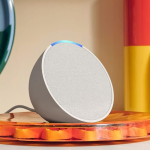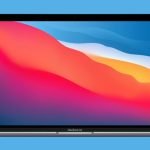
Metro Exodus Enhanced Edition launched today for PlayStation 5 and Xbox Series S|X consoles. We already dived into our own impressions of the impressive ray tracing showcase when it released last month on PC, labeling it as the most advanced lighting seen yet in a videogame.
The next-gen console edition has an extremely similar feature set (with the exception of ray traced reflections, which are only available on PC), so we won’t delve into explaining the underlying tech again. However, we did have the chance to participate in a press roundtable Q&A where 4A Games Executive Producer Jonathan Bloch and Senior Rendering Programmer Ben Archard answered many questions coming from us and other fellow journalists. Below you’ll find the full transcript, lightly edited for clarity.
[IGN India] How difficult was it to find the right balance between ray tracing effects and maintaining a stable frame rate?
Ben Archard: There’s a fairly long story of how we actually brought it to the consoles because before we even had the hardware, we were obviously very cautious. We didn’t know exactly how it was going to perform. We initially very much hedged our bets and instead of going all-in with the full next-gen PC experience that was already well in development, we decided to implement a fallback solution for global illumination, which was actually what became DDGI in the end. That’s a cheaper solution, it doesn’t do the full-screen raytracing. But long story short, we needn’t really have worried, because ultimately, the consoles did actually prove to be a lot more powerful than that initial pessimism would have led us to believe. As you start putting things in, you gradually work up towards better and better frame rates. Ultimately, we got to the point where it actually looked like the next-gen consoles were doing well enough that we’d be able to bring essentially all of the entire feature set over. So at that point, you then have to ask ‘Are we going to be able to make this hit 4K@60’?
One of the bigger difficulties of ray tracing is that it’s not particularly constant in time. When you perform a single ray trace, or you send a ray out, and you ask it to get some data back from the environment, the amount of time that takes is, is variable, because it can go on for a very long distance, it can search an awful lot in the scene, or it can find something like directly in front of it. So yeah, it can happen in variable time. That can cause quite a lot of drift in the amount of time that the frame actually takes to execute. So for that, we realized that we would have to have some kind of dynamic scaling solution involved for the PC. That’s okay, we have NVIDIA DLSS in place and that’s an excellent solution there. But for the consoles, we had to implement our own temporal upscaling system, which takes whatever internal resolution the signal is being generated that and then upscales that to the full 4K. But by doing that, by reducing the overall frame rate by over reducing the internal render resolution, we’re able to then maintain frames rendering at a lower internal resolution, but at 60 frames per second.
[IGN Italy] You said PlayStation 5 and Xbox Series X versions run at 4K, is that native resolution or using techniques like checkerboard rendering?
Ben Archard: It’s technically an upscale thing. Checkerboarding is more of a half-resolution kind of thing. But it’s not explicitly that, it’s dynamic scaling.
[Famitsu] Can you speak about the lighting implementation process for artists? It’s not like ray tracing on, delete all fake lights, done, right?
Ben Archard: Absolutely. It becomes a lot more like the process of stage lighting or lighting for a film, where you actually have physical objects that are behaving in a physically accurate way. When they place a light somewhere in the scene, it will automatically propagate light through the environment. Yes, we still have the standard artists’ procedure of placing lights where they want them to act as light sources, but now all of the other parts of that light propagating and illuminating other areas of the scene is taken care of. The key difference is that previously if they wanted a light to bounce around the corner, they would have had to place an additional light and then balance two lights in tandem in order to try to get the sense of global illumination bounce.
Even then, a single light source is too coarse a unit of information to get accurate results, so even with all that extra effort, they were coming up with something that wasn’t as good. We streamlined all of that extra balancing process.
There is still the artistic part of it of, saying, ‘How do I want this scene to look?’, but it’s a lot less fiddly and opens up a lot more room for them to have artistic expression.
[Wccftech] Do you expect that the time saved during development thanks to raytracing will actually translate in shorter average development times when creating new games in the future, or perhaps the gains will be offset by other sectors?
Jonathan Bloch: We think it’s more complicated than just saying simply that it will make things go faster because there’s so many other parts of development that have nothing to do with ray tracing. Certainly, as we showed, it will make things easier for artists in levels. What that translates to, I guess depends on the team, on the game, and what’s happening. In some instances, it could just mean that the artists are able to polish the area better than they maybe would have, based on the amount of time that they had with the old method, or it could mean that they could make the area bigger because now they have more time to work on more area within that, that same schedule. So it kind of depends, again, it kind of depends on you know, again, each team each game, how things are set up, you know, how things are gonna work, and but no doubt, there are huge benefits to the team, to any team.
[Wccftech] How does ray tracing on consoles compare to the PC version of Metro Exodus Enhanced Edition? Did you have to reduce quality, for example by reducing the number of rays, or compromise in any way?
Ben Archard: So there we have actually reduced the number of rays. Well, you can run normal settings on PC, which would run the same number of rays, but we do have a higher setting with a higher number of rays on the PC. Yes, as I said, there’s a little bit of dynamic internal resolution scaling there. But the other feature that we haven’t been able to ship on consoleswas raytraced reflections, we still have some of the old pipeline in there, we use something called image-based lighting as a replacement for reflections and as a sort of a masking system for certain areas of the game via reflections. Raytraced reflections are the only PC exclusive thing. The entire rest of the pipeline is in there and is essentially the same.
[PlayStation Lifestyle] Will the console versions include a performance quality graphics toggle? Or will it always render in one graphics mode?
Ben Archard: It’s always going to be in one graphics mode. It’s a consistent thing across all platforms, all of them are aiming for 60 frames per second, although different resolutions for certain platforms. But yeah, we decided to go against performance and quality, essentially, we’re trying to deliver the quality version. I think we were very keen very early on to ensure that we kept it to a lot 60. And, and that also, that also plays into technical issues. I mean, we were targeting 60, so you balance the engine very much, especially with all of the temporal elements in it to work specifically for that. This is very much the experience as intended.
[Sirus Gaming] Will future works from your studio now center around the use of ray tracing?
Jonathan Bloch: Yeah, definitely. That’s something I think we’ve said in a couple of statements already. We see this as our future. Our entire programming team is really excited about this. And it’s been something that we see as the future for all games, but specifically for us, we were behind it 100% of the way.
[Digit Magazine] How have you accomplished shorter load times and how much of it depended on console hardware?
Jonathan Bloch: I don’t know if you want to take that one? I think the easy answer is a lot of that came natively with the faster SSDs. But we did do a lot of optimization. I don’t know if you want to speak a little bit more about that.
Ben Archard: You’re absolutely right. It really is very much just like those SSDs are just better. Like really, that’s the story. There’s a lot of that is handled natively, or pretty much all of that is handled natively on the platform API side. And the fact is that those SSDs are just super fast. That’s really just full credit to the platform developers, I think.
[Meristation] Can you tell us a little bit about how haptic feedback and adaptive triggers work?
Jonathan Bloch: One of the big pillars for every Metro game is immersion, and one of the ways that we show that in the game is through a lot of the very tactile animations that the player has with the world, very kind of physical connection that the player can feel through their character on screen, actually interacting with the world in a very physical way. Particularly that comes through with things like our guns, and, you know, the charger that you know, you have to pump the handle in order to charge up your batteries. When thinking about ways to implement haptics, we knew that these things were going to be a perfect fit. As you can imagine, pumping the handle on the car to fill the air tank to pressurize it, it should feel like it’s putting more resistance, the more you put air into it. And we’re able to do that using the DualSense controller’s new features. We’ve tried to bring a lot of unique variety to every device that can take advantage of this. So different guns will have different reactions from trigger poles, because they all fire differently. Some are bigger, some are smaller, so we wanted to bring all those nuances that you would expect from the different types of weapons and the different types of devices that you’re using in the different ways that the haptic feedback makes sense to implement.
[Wccftech] You’ve already implemented haptic feedback and adaptive triggers on PC a first so far, is the PS5 implementation exactly the same? Also, why do you think no other developers are providing juice and support in their games? And did you have to ask Sony for permission?
Jonathan Bloch: The implementation is exactly the same. When we released the PC version of the Metro Exodus Enhanced Edition, they both have the same code base, for lack of a better term. And so, you know, all the tuning and all the settings for that, and all the implementation for that existed. It’s just a matter of actually implementing the library support for the controller in the PC version. And when we did that, it all just worked.
[Wccftech] Do you think that the Ryzen CPUs in PS5 and Xbox Series consoles will help developers meaningly improve AI behavior in next-gen only games?
Ben Archard: They’re very good CPUs, honestly, they really are. We’ve found them to be very, very useful. I’m a rendering programmer and we find that with the previous generation we were a lot more limited with the CPUs, we found ourselves often a lot more CPU bound, we don’t find that that’s anywhere near as much of an issue this generation. So they’re definitely a considerable improvement over their previous generation counterparts. With that said, we’re not the only department that has pressure on the CPU, but we can vouch that they’re excellent CPUs that work across the board. I think that many areas of development can benefit significantly from that increase in power.
[IGN Italy] Beyond ray tracing, how do the console versions of Metro Exodus Enhanced Edition stack up to the PC settings?
Ben Archard: I think they’re reasonably akin to High settings. There are settings on the PC where you can push it even further, like the quality of certain features. That also depends very much on your PC. Generally a very, very high-end PC may have less issue with dynamic resolution scaling. But the feature set is essentially identical, and so is the experience.
Jonathan Bloch: The console hardware is not going to change until a new generation comes out. With PCs, hardware is constantly evolving, so we have to put in even some features where some settings aren’t even really possible to run at a certain time because we’re anticipating that the hardware will get better in a couple of years. So for fans that will go out and buy a new card in the future, they’ll get some cool benefits. It’s more of a matter of leaving the headroom to turn things up when you can handle it.
[GameSpew] Are we likely to see raytraced reflections implemented on consoles in future 4A Games?
Ben Archard: I’m afraid we haven’t made that decision yet. What features we intend to prioritize in future projects, those are still not ready to be discussed.
[Wccftech] Did you evaluate the implementation of other DirectX 12 features like Mesh Shading and Sampler Feedback when developing Metro Exodus Enhanced Edition? Are you planning to use them in future titles?
Ben Archard: As far as Mesh Shaders, they’re not really something we had any need to use because they essentially change the way that you run your geometry pipeline and we already have a very mature geometry pipeline. Maybe we can experiment with them, we’re not ruling them out, but there weren’t strictly speaking necessary for this project.
Sampler Feedback, again, it’s something we’ll look into. I like the look of it, but it needs to be experimented on. In Metro Exodus Enhanced Edition we do have Variable Rate Shading, a Tier 1 implementation that we use to reduce the actual number of pixels drawn for our transparent effects. That helps performance a little bit, but we haven’t gone fully into Tier 2 VRS yet.
[IGN Poland] How much room for improvement is there with the PlayStation 5 and Xbox series consoles? Do you feel like they’re holding back technology available on PC?
Ben Archard: That remains to be seen really. There’s going to be years of technological development optimization. And, honestly, that’s the process of working throughout a console generation lifecycle. You start at the beginning, you put something out, and then you work and you learn and you figure things out. So how much room there is left? it’s utterly impossible for us to say, we’re gonna keep trying to push as much in as we can until they break. As far as a hindrance, I would honestly say that I’m really glad that they’ve done raytracing. Now we’re in the era of ray tracing, we can go all in, and the fact that the consoles are there is a really good solid baseline for that. It allows us to say, Okay, well, we’re going to do that on PC, we’re going to do that on all platforms. We’re going to cut off from the old way of doing things as it were. And we can now go full steam ahead with this new and what we feel is a much better paradigm for working within.
[Meristation] What do you think about Xbox Series S?
Jonathan Bloch: It’s definitely a targeted SKU that has its purpose for Microsoft and for their business model. We made a decision to run at 1080p to better suit the specific hardware that they included in it, we wanted to make sure to maintain all the other capabilities that we wanted to bring to Metro Exodus Enhanced Edition, with 60 FPS and ray tracing being two of the most important features. We wanted to make sure we could deliver them to both of those SKUs. We think that that was the right choice for the product.
Thank you for your time.
The post Metro Exodus Enhanced Edition Q&A: ‘Next-Gen Consoles Are Much More Powerful Than We First Thought’ by Alessio Palumbo appeared first on Wccftech.
Powered by WPeMatico






